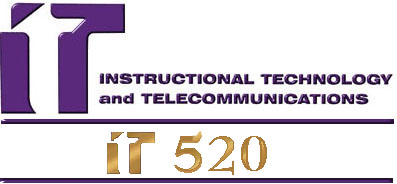








Unit 6
ITT 520: MICROCOMPUTER APPLICATIONS IN
INSTRUCTIONAL TECHNOLOGY
Weekend Academy Format
Spring 1998
UNIT 6: MICROCOMPUTERS IN EDUCATION
Objectives
1. Briefly describe the four models of computer literacy (programming, literacy curriculum,
problem-solving, and tools/applications).
2. Describe the differences between the two approaches to using computers in the schools called
"Curriculum Integration" and "Transformation."
3. Describe the major factors that should be considered in purchasing a personal computer.
4. Describe the role of a technology coordinator and the need for teacher involvement in
technology planning and implementation.
5. Describe at least two approaches for effective staff development.
6. Describe at least two ways in which computers can enhance reading or writing skill
development.
7. Describe at least two ways (for each subject matter area) in which computers can assist
teachers in meeting their social science, science, and mathematics curriculum objectives.
8. Describe and evaluate at least one of the major issues for each of the following categories
dealing with computers in education: social issues, ethical issues, and cultural issues.
9. List and briefly describe at least three trends in computer hardware and software that seems
likely to continue.
10. Describe how two future computer-related issues (e.g., virtual reality, the Internet, etc.) will
effect K-12 students.
Reading
1. Handout article: "Beyond Computer Literacy: Technology Integration and Curriculum
Transformation"
2. Handout article: "Technology Implementation"
3. Textbook: Chapter 12: "Curriculum Integration: Reading and the Language Arts"
4. Textbook: Chapter 13: "Curriculum Integration: Social Studies, Science, and Mathematics"
5. Textbook: Chapter 15: "Issues in Educational Computing"
Assignments
None
Main Page
Syllabus
Unit 1
Unit 2
Unit 3
Unit 4
Unit 5
Links
Webmaster: Debbie Denise Reese
 This page hosted by GeoCities Get your own Free Home Page
This page hosted by GeoCities Get your own Free Home Page


















 This page hosted by GeoCities Get your own Free Home Page
This page hosted by GeoCities Get your own Free Home Page